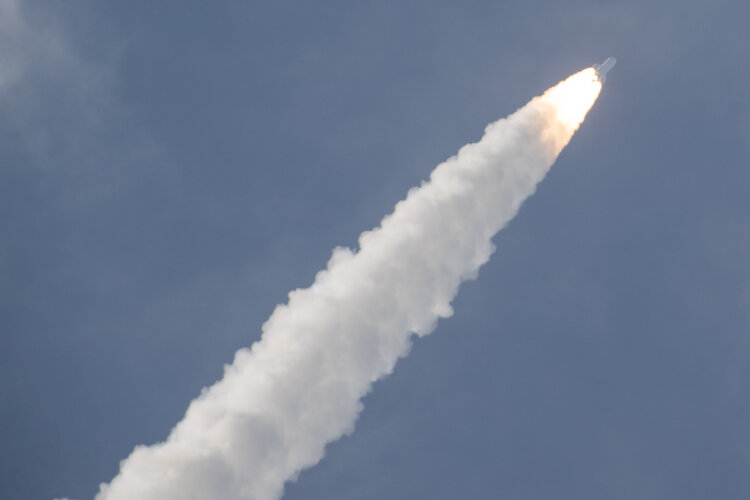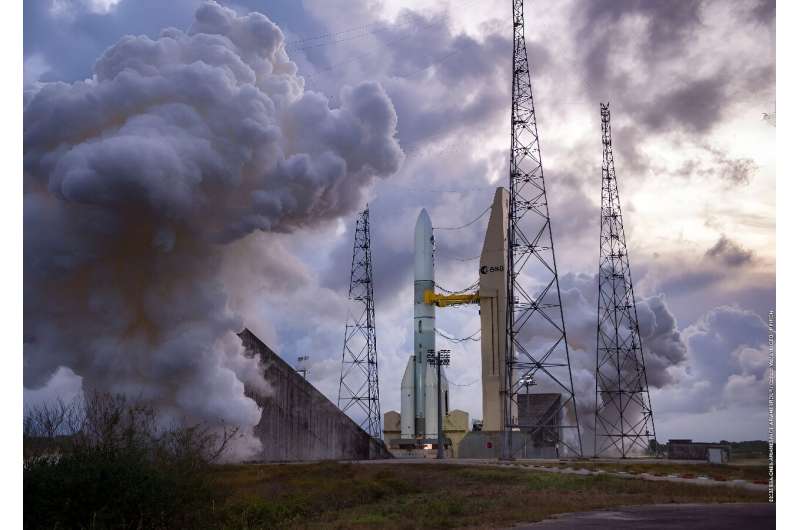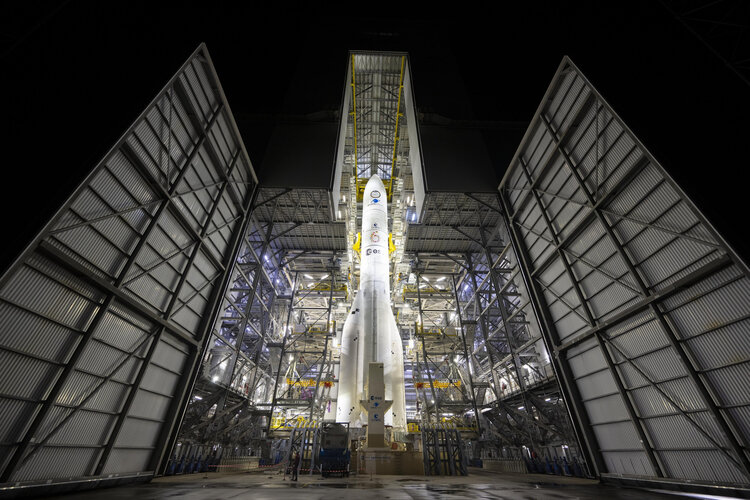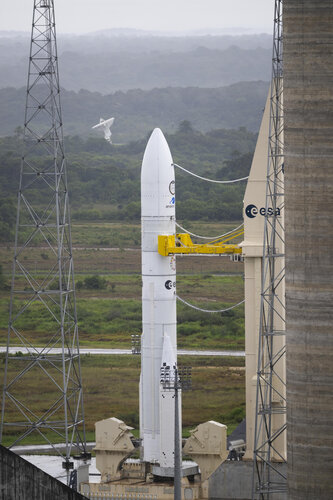
Copernical Team
NASA moon rocket stage for Artemis II moved, prepped for shipment

NASA is preparing the SLS (Space Launch System) rocket core stage that will help power the first crewed mission of NASA's Artemis campaign for shipment. On July 6, NASA and Boeing, the core stage lead contractor, moved the Artemis II rocket stage to another part of the agency's Michoud Assembly Facility in New Orleans. The move comes as teams prepare to roll the massive rocket stage to the agency's Pegasus barge for delivery to NASA's Kennedy Space Center in Florida in mid-July.
Prior to the move, technicians began removing external access stands, or scaffolding, surrounding the rocket stage in early June. NASA and Boeing teams used the scaffolding surrounding the core stage to assess the interior elements, including its complex avionics and propulsion systems. The 212-foot core stage has two huge propellant tanks, avionics and flight computer systems, and four RS-25 engines, which together enable the stage to operate during launch and flight.
The stage is fully manufactured and assembled at Michoud. Building, assembling, and transporting is a joint process for NASA, Boeing, and lead RS-25 engines contractor Aerojet Rocketdyne, an L3Harris Technologies company.
Europe's new Ariane 6 rocket blasts off for first time
 Europe's new Ariane 6 rocket blasted off for the first time smoothly on Tuesday, carrying with it the continent's hopes of regaining independent access to space.
The much-delayed inaugural flight of the European Space Agency's most powerful rocket yet launched from Europe's spaceport in Kourou, French Guiana at 4pm local time (1900 GMT).
Crews on the ground at the launch site, which
Europe's new Ariane 6 rocket blasted off for the first time smoothly on Tuesday, carrying with it the continent's hopes of regaining independent access to space.
The much-delayed inaugural flight of the European Space Agency's most powerful rocket yet launched from Europe's spaceport in Kourou, French Guiana at 4pm local time (1900 GMT).
Crews on the ground at the launch site, which Ariane 6 takes flight
 Image:
Image:
Ariane 6 launches to the sky on 9 July 2024.
Europe’s newest heavy-lift rocket, it is designed to provide great power and flexibility at a lower cost than its predecessors. The launcher’s configuration – with an upgraded main stage, a choice of either two or four powerful boosters and a new restartable upper stage – will provide Europe with greater efficiency and possibility as it can launch multiple missions into different orbits on a single flight, while its upper stage will deorbit itself at the end of mission.
Ariane 6 first liftoff
 Video:
03:04:20
Video:
03:04:20
Europe’s new rocket Ariane 6 powered Europe into space taking with it a varied selection of experiments, satellites, payload deployers and reentry demonstrations that represent thousands across Europe, from students to industry and experienced space actors.
This inaugural flight, designated VA262, is a demonstration flight to show the capabilities and prowess of Ariane 6 in escaping Earth's gravity and operating in space. Nevertheless, it had several passengers on board.
Ariane 6 was built by prime contractor and design authority ArianeGroup. In addition to the rocket, the liftoff demonstrated the functioning of the launch pad and operations on ground at
Europe's new Ariane 6 rocket powers into space

Countdown to first launch of Europe's Ariane 6 rocket

After four years of delays, Europe's new Ariane 6 rocket is set to blast off for the first time on Tuesday, carrying with it the continent's hopes of regaining independent access to space.
The inaugural flight of the European Space Agency's (ESA) most powerful rocket yet is scheduled to launch from Europe's spaceport in Kourou, French Guiana at 3pm local time (1800 GMT).
Since the last flight of the rocket's workhorse predecessor, Ariane 5, a year ago, Europe has been unable to launch satellites or other missions into space without relying on rivals such as Elon Musk's US firm SpaceX.
So many will be nervously watching the launch, hoping it can bring an end to a difficult era for European space efforts.
Ariane 6 the day of launch
 Image:
Ariane 6 the day of launch
Image:
Ariane 6 the day of launch Ariane 6 revealed as nine-story mobile building rolls back from the launch pad
 Image:
Ariane 6 revealed as nine-story mobile building rolls back from the launch pad
Image:
Ariane 6 revealed as nine-story mobile building rolls back from the launch pad Ariane 6 sees 'first light' as mobile gantry is rolled back before fuelling begins
 Image:
Ariane 6 sees 'first light' as mobile gantry is rolled back before fuelling begins
Image:
Ariane 6 sees 'first light' as mobile gantry is rolled back before fuelling begins Ariane 6 from above in the final hours before liftoff
 Image:
Ariane 6 from above in the final hours before liftoff
Image:
Ariane 6 from above in the final hours before liftoff 
